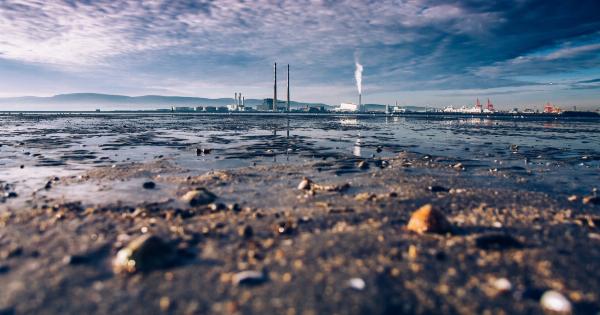Reduced sinking velocity is a phenomenon that has been observed in various aquatic bodies, including oceans, lakes, and streams. It refers to the slower rate at which sediment particles settle towards the bottom of the water column.
This may occur due to a number of factors, such as the presence of dissolved organic matter, low levels of turbulence, or the absence of strong currents. In this article, we will examine the connection between reduced sinking velocity and the lack of certain substances in the aquatic environment.
The Importance of Sinking Velocity
Sinking velocity plays a vital role in a number of natural processes that occur in aquatic ecosystems.
For example, it helps to transport nutrients from the surface to the bottom of the water column, where they can be taken up by organisms that live on the sediment. Sediment particles also provide a habitat for various microorganisms, which can impact the overall health of the ecosystem. Therefore, any changes in sinking velocity can have far-reaching effects on the aquatic environment.
Causes of Reduced Sinking Velocity
There are several factors that can contribute to reduced sinking velocity. One of the most common is the presence of dissolved organic matter (DOM) in the water.
This can include substances like humic acids, which are formed by the decay of plant and animal matter. DOM can coat sediment particles and make them more buoyant, which slows down their settling rate. In addition, high levels of nutrients like phosphorus and nitrogen can lead to the growth of phytoplankton, which can also affect sinking velocity.
Phytoplankton can form aggregates that are too large to be quickly transported to the bottom of the water column.
The Role of Turbulence
Turbulence is another factor that can impact sinking velocity. In areas where there are strong currents or waves, sediment particles may be transported back up towards the surface before they have a chance to settle.
This can create a feedback loop, where the particles remain suspended in the water for longer periods of time. Conversely, low levels of turbulence can allow sediment particles to settle more quickly. This is why areas with calm water, like lakes, may have reduced sinking velocity compared to areas with waves and currents, like oceans.
Lack of Certain Substances
In addition to the factors described above, there may be a connection between reduced sinking velocity and the lack of certain substances in the aquatic environment.
For example, recent research has shown that the presence of iron can play a key role in promoting sinking velocity. Iron can act as a binding agent, helping to aggregate sediment particles and make them more susceptible to settling.
In areas where iron is scarce, such as certain regions of the ocean, this can lead to reduced sinking velocity and a buildup of suspended particles.
Other Compounds
Similarly, other compounds that are essential for the growth and survival of aquatic organisms may also impact sinking velocity.
For example, nitrogen and phosphorus are vital nutrients for phytoplankton, which can either aggregate and increase sinking velocity or form larger, more complex structures that slow sinking. In addition, dissolved oxygen can play a role in influencing the overall health of the ecosystem, as well as sinking velocity.
The Importance of Understanding Reduced Sinking Velocity
Reduced sinking velocity is not just a natural phenomenon of aquatic environments, but also an important indicator of overall ecosystem health.
Its impact on nutrient cycling and the structure of the ecosystem is critical to understanding complex ecological relationships. Understanding the factors that contribute to changes in sinking velocity, such as the presence or absence of certain compounds, can aid in monitoring and conservation efforts to preserve these ecosystems for future generations.
Conclusion
In conclusion, reduced sinking velocity is a complex phenomenon that can have far-reaching effects on aquatic ecosystems.
The presence or absence of certain substances, such as dissolved organic matter or iron, can play a key role in slowing down or enhancing the sinking rate of sediment particles. Understanding the factors that impact sinking velocity is critical to maintaining the health and diversity of aquatic environments.






























